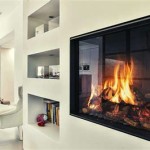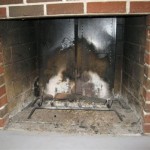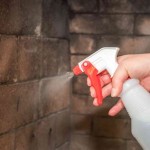Mantis Gas Fireplace Insert: A Comprehensive Overview
The Mantis gas fireplace insert represents a modern solution for homeowners seeking to upgrade their existing fireplaces with enhanced efficiency, aesthetic appeal, and ease of use. This insert is designed to fit within existing fireplace cavities, transforming a traditionally inefficient wood-burning fireplace into a clean-burning, controllable heat source. Understanding the features, benefits, installation considerations, and maintenance requirements associated with the Mantis gas fireplace insert is crucial for prospective buyers to make informed decisions.
Gas fireplace inserts, in general, offer numerous advantages over wood-burning fireplaces. These advantages include reduced emissions, consistent heat output, convenient operation via remote control or thermostat, and elimination of the need to purchase, store, and transport firewood. The Mantis gas fireplace insert aims to provide these benefits within a streamlined, aesthetically pleasing package tailored to modern homes.
Key Features and Benefits of the Mantis Gas Fireplace Insert
The Mantis gas fireplace insert distinguishes itself through several key features and associated benefits. These features contribute to its overall performance, user experience, and aesthetic appeal.
Heating Efficiency and Performance: One of the primary selling points of the Mantis gas fireplace insert is its high heating efficiency. The insert is designed to maximize heat output while minimizing gas consumption. This is achieved through advanced burner technology, efficient heat exchangers, and precise flame control. The Mantis typically boasts a high AFUE (Annual Fuel Utilization Efficiency) rating, reflecting its ability to convert a significant percentage of the fuel's energy into usable heat. This translates to reduced heating costs and lower energy bills for homeowners. Furthermore, the insert often includes a variable-speed blower fan that helps circulate the heated air throughout the room, ensuring even temperature distribution and eliminating hot spots.
The heating capacity of the Mantis gas fireplace insert is typically measured in British Thermal Units (BTUs). Different models offer varying BTU outputs to accommodate different room sizes and heating requirements. Homeowners should carefully assess their heating needs and select a model with an appropriate BTU rating to ensure optimal comfort and efficiency. The ability to control the flame height and heat output via a remote control or thermostat further enhances the user's ability to customize the heating experience.
Aesthetic Design and Customization: The Mantis gas fireplace insert is designed with a focus on aesthetic appeal. The insert features a modern and minimalist design that complements a wide range of interior styles. The firebox typically includes realistic-looking ceramic logs that mimic the appearance of a natural wood-burning fire. These logs are carefully crafted to create a visually appealing flame pattern and ambiance.
Furthermore, the Mantis often offers various customization options to suit individual preferences. These options may include different firebox liners, such as brick, stone, or reflective glass, which can alter the overall appearance of the fire. The insert may also be available in different finishes, such as black, brushed nickel, or stainless steel, allowing homeowners to match the insert to their existing decor. The ability to personalize the appearance of the Mantis gas fireplace insert ensures that it seamlessly integrates into the home's aesthetic.
Ease of Use and Maintenance: The Mantis gas fireplace insert is designed for ease of use and minimal maintenance. The insert typically includes a remote control that allows homeowners to adjust the flame height, heat output, and blower fan speed from the comfort of their couch. Some models also offer programmable thermostat settings, enabling automated temperature control and energy savings. The ignition system is usually electronic, eliminating the need for manual lighting and ensuring reliable start-up.
Maintenance requirements for the Mantis gas fireplace insert are generally minimal. Regular cleaning of the glass door and occasional inspection of the burner and venting system are typically sufficient to ensure optimal performance. A qualified technician should perform an annual inspection to check for any potential problems and ensure the system is operating safely and efficiently. Compared to traditional wood-burning fireplaces, the Mantis gas fireplace insert requires significantly less maintenance, saving homeowners time and effort.
Installation Considerations for the Mantis Gas Fireplace Insert
Proper installation is crucial for the safe and efficient operation of the Mantis gas fireplace insert. Installation should be performed by a qualified and certified technician who is familiar with gas fireplace inserts and local building codes. Several factors must be considered during the installation process.
Venting Requirements: The Mantis gas fireplace insert requires proper venting to exhaust combustion byproducts safely outside the home. The venting system must be installed according to the manufacturer's specifications and local building codes. The type of venting required typically depends on the model of the insert and the existing chimney configuration. Direct vent systems draw combustion air from outside the home and exhaust combustion gases directly outside, while B-vent systems utilize the existing chimney for venting. A thorough inspection of the existing chimney is necessary to ensure it is in good condition and can safely handle the venting requirements of the new insert. Any necessary repairs or modifications to the chimney should be completed before installing the insert.
Gas Line Connection: The Mantis gas fireplace insert must be connected to a gas line to supply fuel for combustion. A qualified gas technician should perform the gas line connection, ensuring it is done safely and according to local regulations. The gas line must be properly sized to meet the insert's gas consumption requirements. A shut-off valve should be installed near the insert to allow for easy isolation of the gas supply in case of emergency or maintenance. Leak testing should be performed after the gas line connection to ensure there are no gas leaks.
Electrical Connection: The Mantis gas fireplace insert often requires an electrical connection to power the blower fan, electronic ignition, and remote control receiver. The electrical connection should be made by a qualified electrician and comply with local electrical codes. A dedicated circuit is typically recommended to prevent overloading the electrical system. The electrical connection should be properly grounded to ensure safety.
Safety Features and Considerations
Safety is paramount when operating any gas-burning appliance. The Mantis gas fireplace insert incorporates several safety features to protect homeowners and their families. Understanding these features and adhering to safety guidelines is essential for safe operation.
Safety Shut-Off Systems: The Mantis gas fireplace insert typically includes a safety shut-off system that automatically shuts off the gas supply in the event of a malfunction, such as a pilot light failure or a gas leak. This system is designed to prevent the accumulation of unburned gas and reduce the risk of explosion or carbon monoxide poisoning. Regular testing of the safety shut-off system is recommended to ensure it is functioning properly.
Glass Barrier: The glass door of the Mantis gas fireplace insert is designed to provide a barrier between the flames and the living space. The glass is typically tempered to withstand the high temperatures generated by the fire. However, the glass surface can still become very hot during operation. It is important to keep children and pets away from the fireplace when it is in operation and to avoid touching the glass surface. Some models may include a safety screen to further protect against accidental contact with the hot glass.
Carbon Monoxide Detection: Carbon monoxide (CO) is a colorless, odorless gas that can be deadly. It is produced by the incomplete combustion of fuels, such as natural gas. It is crucial to install carbon monoxide detectors in the home, especially near sleeping areas, to detect the presence of CO. The detectors should be regularly tested and replaced according to the manufacturer's recommendations. If a carbon monoxide alarm sounds, immediately evacuate the home and call emergency services. Regular inspection and maintenance of the Mantis gas fireplace insert can help prevent carbon monoxide leaks.
By carefully considering these key aspects, homeowners can make an informed decision about purchasing and installing a Mantis gas fireplace insert, ensuring a safe, efficient, and aesthetically pleasing heating solution for their homes.

Empire Comfort Systems Bi28bmn Hearthside

Mantis High Efficient Fireplace System

Fireplaces Gas Empire Mantis Fireplace Package Ff 28 Bm

Empire Comfort Systems Ff28bmn Hearthside

Inserts Gas Empire Mantis Fireplace Insert Package Fi 28 Bm

Fireplaces Gas Empire Mantis Bay Window Fireplace Black Bf 28 Cm

White Mountain Hearth Bp28 Bm Fireplace

Empire Comfort Systems Fg28bmn Hearthside

Empire Rushmore 30 Clean Face Direct Vent Fireplace Insert Us

Empire Loft Direct Vent Gas Fireplace 36 Woodland
Related Posts








